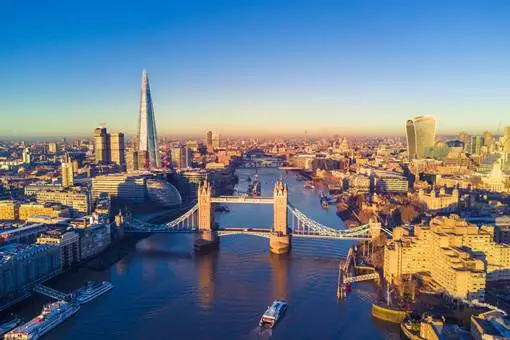The financial risks of climate change
- 28th April 2015
- Sustainable Business

While the world studies the environmental impacts of climate change, what are the potential financial risks that businesses face?
Climate change “can no longer be denied”, according to US president Barack Obama. Data shows that increasing amounts of public money in the US is being spent on environmental protection.
The money is going towards initiatives such as the South Florida wetland system that, during the Earth day address, president Obama said is “one of the best defences against climate change and rising sea levels".
It’s increasingly common to hear about funds being used to advance programmes in preparation for climate change. Times are changing and even the big oil and gas company, BP, is gearing up to provide more information about its “preparation for the low carbon transition”.
Bob Dudley, group chief executive at BP, told shareholders: “At BP we have consistently advocated for stronger government action and have been open and transparent about our environmental impact.”
Businesses and governments will feel the impact of climate change in a variety of ways. Financially, there will be ways to mitigate the risk - but how?
The costs of adaptation
To begin with, it’s wise to consider how much it will cost to adapt to a warmer world. Major budget pressures on national governments and corporations are being created by increasingly frequent and severe weather events.
Climate change is becoming more severe than originally projected, according to research from the Intergovernmental Panel on Climate Change (IPCC), and will require immense funding to protect against.
Current total public funding levels are growing - up from $4 billion in 2010 to $25 billion in 2013 - but they still fall far short of the forecast total required.
In order to adapt to climate change, recent projections show that the developing world will require $140 billion to $300 billion of annual funding by 2050, according to the UN Environment Programme’s adaptation report.
It’s critical for us to have a handle on finances - current levels, totals needed - before attempting to meet the threats of climate change.
Understanding the risk
For corporations and governments alike, the financial risks of environmental catastrophes can be mitigated through insurance policies. Property is the most common asset to insure, as recent years have shown the extent of damage that can be wreaked upon them.
Hurricane Sandy was said to have caused upwards of $68 billion of damage across the east coast of the US, where it destroyed more than 300,000 homes. However, it’s emerging markets that are most at risk from financial losses.
Developing economies are usually undergoing a rapid pace of expansion, often with little in the way of building and construction regulations to protect against potential weather events. Despite this, even urban areas in developed countries are potential minefields of financial losses - the greater the property value the greater the potential loss.
The risks are increasing and sending insurers scrambling to adapt their models.
Evolving insurance
Insurance is being increasingly thought of as an alternative to traditional aid for developing countries. German minister for the environment Barbara Hendricks is aiming to champion climate change insurance at the June G7 summit, according to EurActiv Germany.
However, it’s a tricky subject due to the complexity of the insurance policies that will be needed.
The price models that insurers use are becoming more sophisticated, especially with the inclusion of up-to-date weather modelling technologies. Models can utilise these technologies alongside the recent steps forward in big data applications to help create more informed strategies.
Increased exposure and claims are being noted due to a number of factors that include climate change, making it difficult for insurance companies to underwrite new policies.
“We need to know those risks, so we can charge the right price,” Andreas Schraft, head of catastrophe perils at Swiss Re, told the Financial Times.
“There are a few things we can do and already do... we can share our view of the risks,” he added.
Mr Schraft continued to explain how greater sharing of information could help develop plans to protect against weather threats: “The insurance industry has a wealth of data about what can help and that is also relevant for architects and city planners.”
Mitigating the risks of climate change by trying to lower carbon emissions may be too little too late. Lessening the financial impact through insurance could be one way governments and corporations can weather the coming storms.
Other News
Citi Microentrepreneurship Awards celebrate responsible business finance sector
Sixteen businesses that have accessed responsible business finance have been announced as finalists at the Citi Microentrepreneurship Awards. The awards,…
£70 million regeneration plan for London launched
A £70 million regeneration plan to support growth and community development in London has been launched by the city’s mayor,…
Wind and solar power could challenge nuclear energy
The value of nuclear energy, and in particular the troubled Hinkley Point, is being questioned in light of the possibilities…



